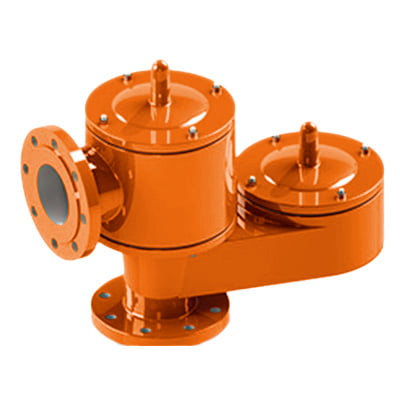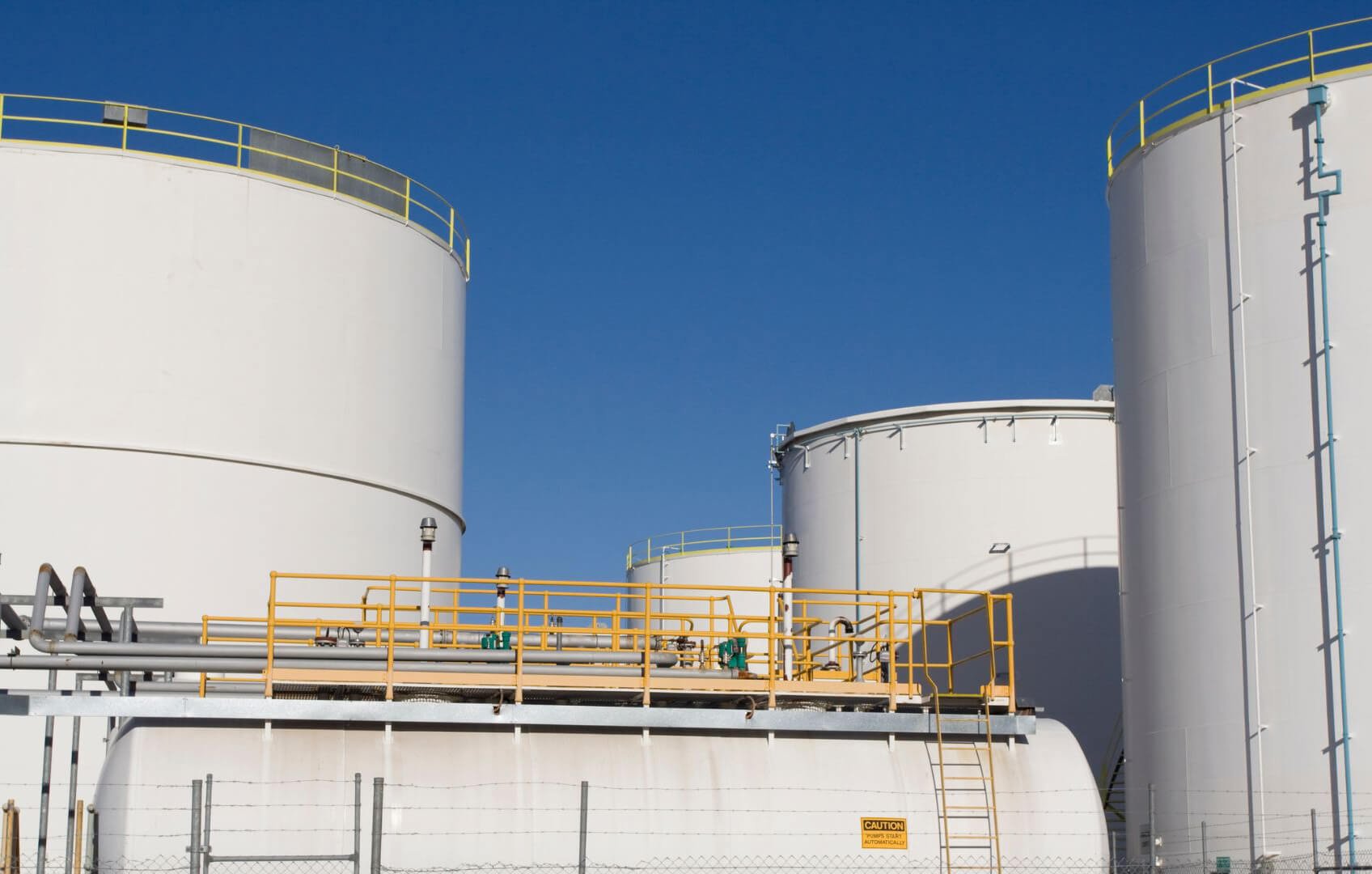Was ist ein Entlüftungsventil?
Ein Entlüftungsventil (Druck-/Vakuumentlastungsventil) ist zum Schutz von Lagertanks, Prozesssystemen und Geräten vor übermäßigen Druck- und Vakuumbedingungen ausgelegt. Diese Ventile ermöglichen die kontrollierte Entlüftung von Gasen oder Dämpfen und tragen dazu bei, eine sichere Arbeitsumgebung aufrechtzuerhalten, indem Tankschäden verhindern und den Produktverlust aufgrund von Verdunstung minimiert werden.
Wie funktionieren Verschnaufungsventile?
Entlüftungsventile funktionieren durch Verwendung von Gewichts- oder Federbelastungspaletten, um den Fluss durch das Ventil zu steuern. Wenn der Innendruck oder Vakuum einen Sollwert erreicht, hebt die Palette den Sitz ab, um den Fluss zu ermöglichen. Dies verhindert Emissionsverluste bis sehr nahe am festgelegten Druck und verhindert die Luftaufnahme bis zum sehr nahe am Vakuum.
Was sind die Vorteile der Verwendung des Entlüftungsventils?
- Hohe Durchflusskapazität von einer Kompaktventilgröße.
- Großer Druck- und Vakuumeinstellungen für den maximalen Tankschutz.
- Minimierung von Gasverlust und Verdunstung, was zu wirtschaftlichen Einsparungen führt.
- Einhaltung strenger Emissionskontrollvorschriften.
- Das modulare Design ermöglicht die Anpassung an bestimmte Anforderungen.
Aus welchen Materialien hergestellt werden Verschnaufungsventile?
Die Verschnaufungsventile können aus verschiedenen Materialien gebaut werden, einschließlich Aluminium, Edelstahl, Kohlenstoffstahl, duktilem Eisen und Legierungen wie C276. Die Auswahl des Materials hängt von der spezifischen Anwendung und der Art der Medien ab.
Was sind gängige Anwendungen von Entlüftungsventilen?
Zu den häufigen Anwendungen gehören der Schutz von Lagertanks in Branchen wie Pharmazeutika, Lebensmitteln und Getränken, chemische Verarbeitung und petrochemische Industrie. Sie werden auch in Systemen verwendet, in denen Vaporen weggeschlagen oder in die Atmosphäre entlüftet werden müssen.
Welchen Standards entsprechen Entlüftungsventile?
Entlüftungsventile werden gemäß Standards wie API 2000:2014 und EN ISO 28300:2016 entwickelt und getestet. Sie erfüllen außerdem die europäische Richtlinie 2014/34/EU für Geräte zur Verwendung in explosionsgefährdeten Bereichen (ATEX).
Wie wähle ich das richtige Füßenventil für meine Anwendung aus?
Durch die Auswahl des rechten Abläufers werden Faktoren wie Tankgröße, Medienmerkmale (Blitzpunkt, Siedepunkt, latente Verdampfungswärme, Molekülmasse), Ort, maximale Füllungs- und Entleerungsraten sowie die erforderlichen Einstellungen für den Druck und die Vakuumeinstellungen berücksichtigt. Die Beratung mit einem Yee-Ventilexperten und der Verwendung eines Ventilgrößendienstes kann dazu beitragen, eine optimale Leistung und Kosteneffizienz zu gewährleisten.
Welche Wartung ist für die Entlüftungsventile erforderlich?
Regelmäßige Inspektion und Wartung sind erforderlich, um sicherzustellen, dass die Entlüftungsventile korrekt funktionieren. Dies beinhaltet die Überprüfung nach Blockaden, die Gewährleistung der Paletten und Sitze, die sauber und frei von Trümmern sind, und zu überprüfen, ob die festgelegten Drucke und Vakuen korrekt sind. Die Wartungsverfahren sollten den Empfehlungen des Herstellers einhalten, um die Sicherheit und Effizienz aufrechtzuerhalten.



